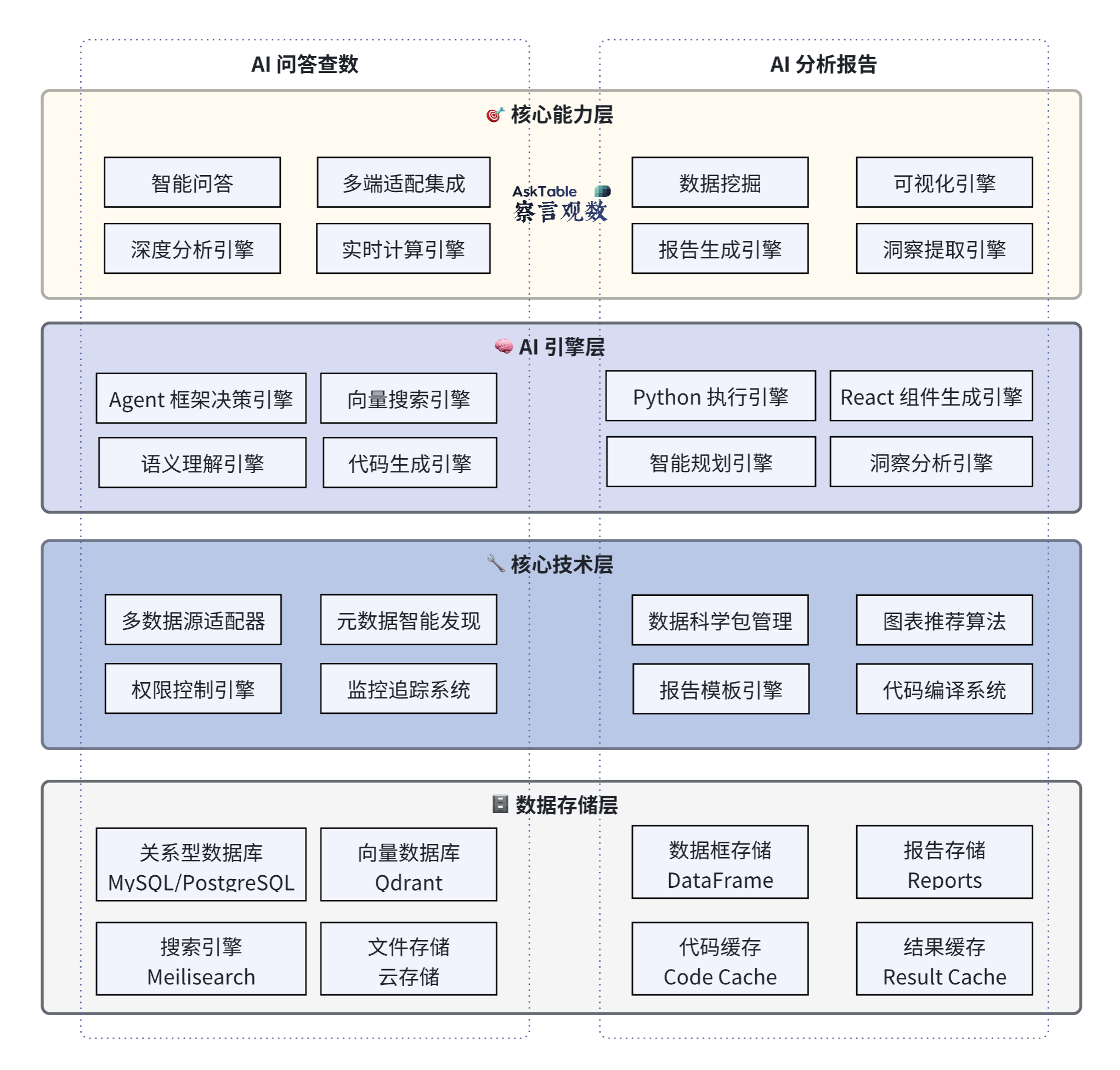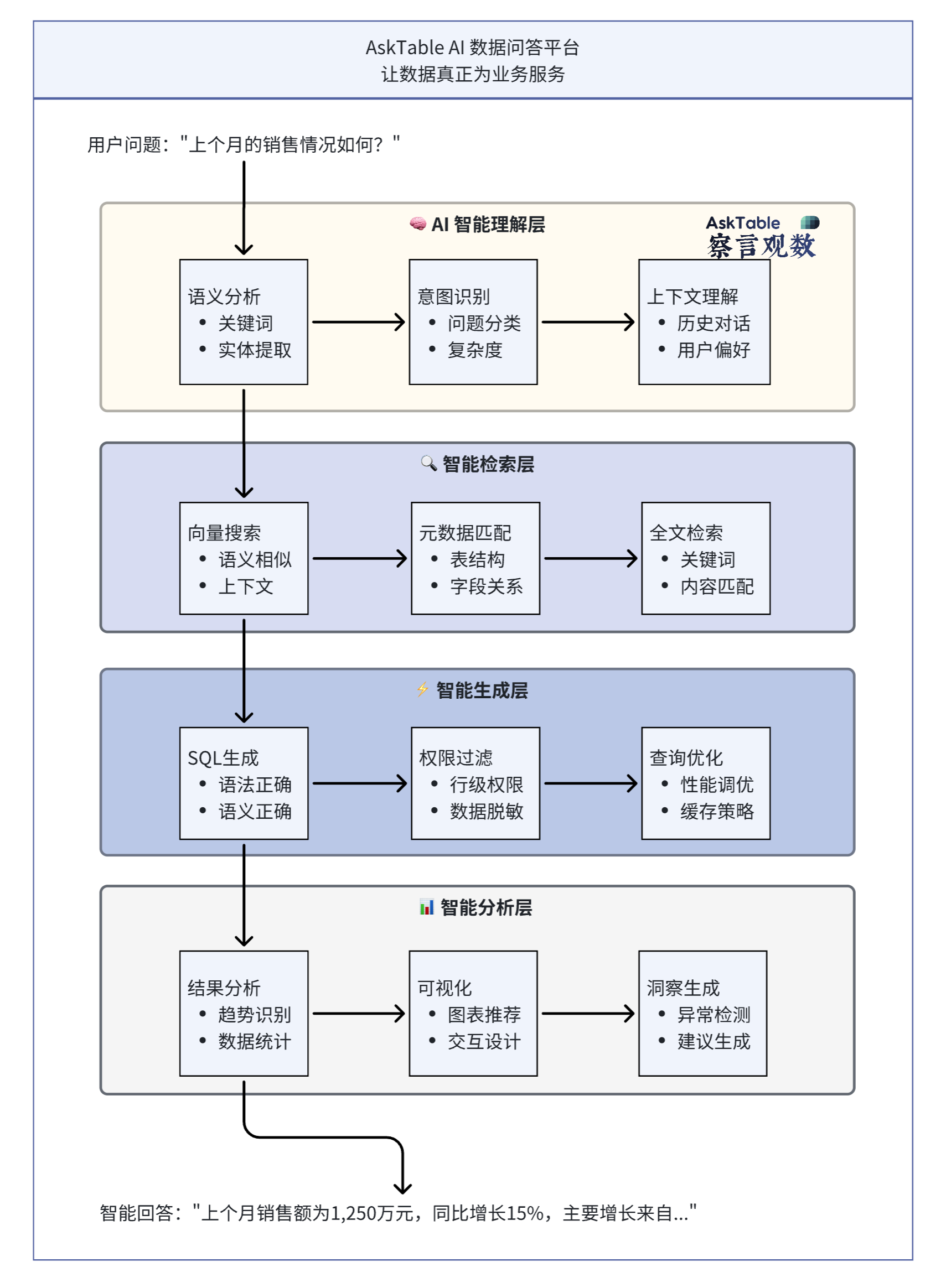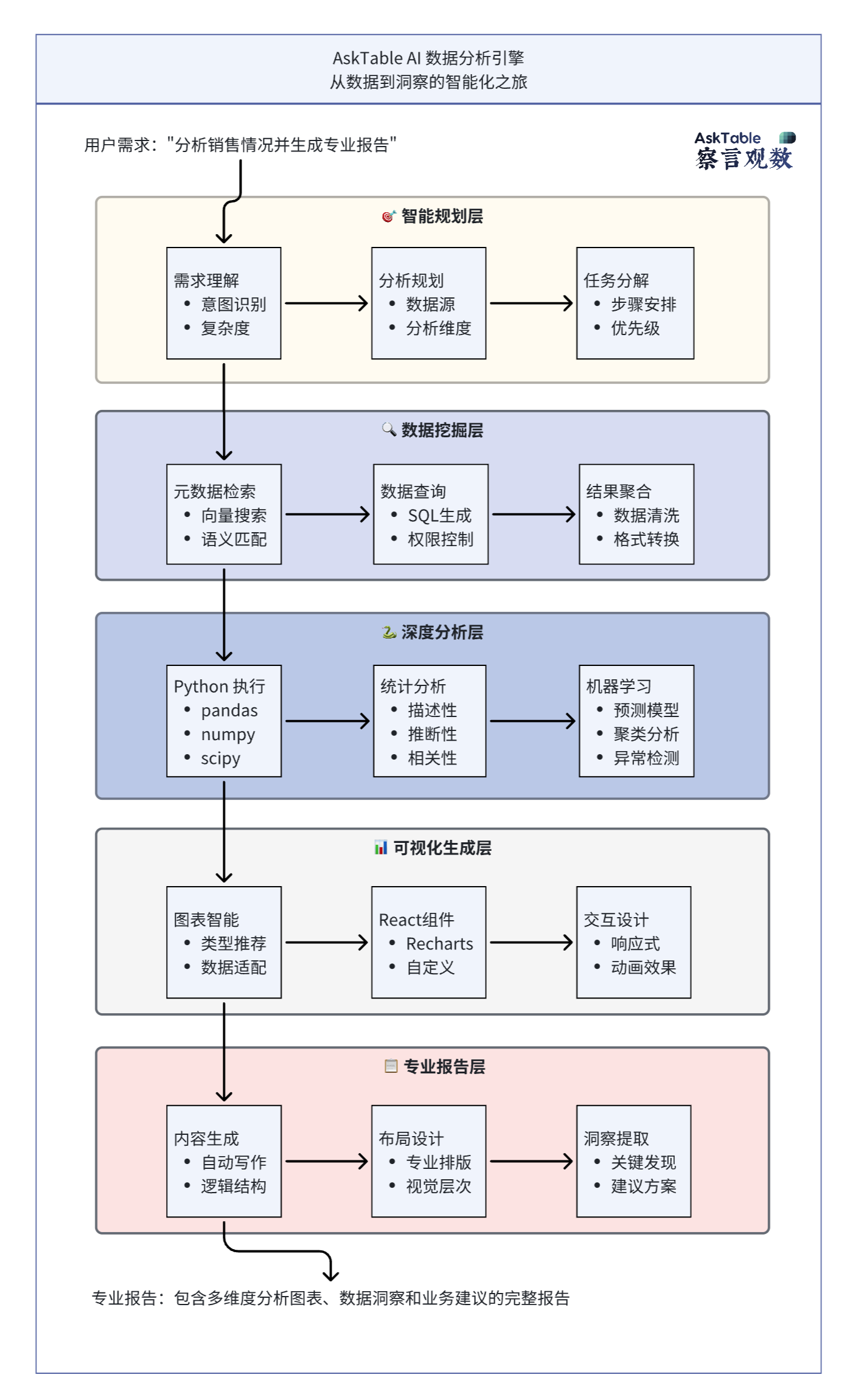arch_overview
Architecture
Overall Architecture

AskTable's overall design adopts a four-layer hierarchical architecture, from top to bottom:
AskTable Core Abilities: Application Power Directly Accessible to Users
The Core Abilities layer is the user-facing experience layer, abstracting complex data interactions into simple and easy-to-use functional interfaces. Through intelligent Q&A, real-time computing, and visualization, users can quickly complete data queries and analysis using natural language. It also supports data mining, automatic report generation, and insight extraction, and can be flexibly embedded in enterprise WeChat, Feishu, or SaaS systems. The design philosophy of AskTable is "powerful core, lightweight interface," making intelligent analytical capabilities easily plug-in and always available.
AskTable AI Engines: The Intelligent Analysis Brain
The AI Engines layer is the core brain of AskTable, responsible for converting natural language questions into complete data analysis processes. It includes engines such as semantic understanding, Agent decision-making, multi-step reasoning, SQL generation, Python execution, React component generation, and insight analysis. This layer realizes automated orchestration from user intent to data operations, enabling AskTable to function like an intelligent analyst, understand questions, develop plans, generate code, and finally provide visual results and key insights.
AskTable Core Tech: Intelligent Infrastructure
The Core Tech layer is the foundation that drives AskTable's intelligence. It encapsulates more than 20 database access capabilities through multi-data source adapters, hiding differences; automatically constructs a data knowledge graph through intelligent metadata discovery; ensures security and compliance through permission control and monitoring tracking; and supports management of Python scientific computing packages and recommendation algorithms for charts. This layer provides stable and powerful technical support for upper-level engines, making data access, permission isolation, and algorithm execution efficient and reliable.
AskTable Data Foundation: The Fundamental Basis for All Data
The Data Foundation layer is the storage and caching system of AskTable, carrying all structured and semi-structured data. It uses MySQL/PostgreSQL as the core transactional storage, Qdrant vector database for semantic search, Meilisearch for full-text search, and supports result caching and code caching to improve performance. In addition, it supports persistent storage of DataFrames, files, and analysis reports. The Data Foundation acts as the foundation of AskTable, ensuring efficient data access, persistent storage, and quick retrieval.
AI Q&A Data Query Process
The following diagram shows how the system parses, generates SQL, executes, and returns answers step by step after the user asks a question in one sentence.

When a user poses a question (such as "How was the sales situation last month?"), AskTable will go through four layers of intelligent processing: first, in the AI Intelligent Understanding Layer, the system performs semantic analysis and intent recognition, accurately understanding the question by combining historical conversation and user preferences. Then, it enters the Intelligent Retrieval Layer, locating the most relevant data from table structures, field relationships, and keyword content through vector semantic search, metadata matching, and full-text search. Next, in the Intelligent Generation Layer, the system automatically generates SQL, performs permission filtering and data masking, and optimizes queries to improve performance. Finally, it enters the Intelligent Analysis Layer, performing trend identification and statistical analysis on the results, recommending appropriate charts, and generating insights, thus outputting natural language answers like "Last month's sales were 12.5 million yuan, an increase of 15% compared to the previous year." This entire process achieves a fully automatic closed-loop from natural language questions to data-driven insights.
AI Analysis Report
The following diagram illustrates the complete workflow from analysis requirements to data mining, deep Python analysis, visualization generation, and professional report output.

When a user requests "analyze the sales situation and generate a professional report," AskTable will go through five levels of intelligent processes: first, in the Intelligent Planning Layer, the system understands user intent based on data and general knowledge of large models, develops an analysis plan, and breaks down tasks. Then, it moves to the Data Mining Layer, where it finds relevant data through metadata retrieval and semantic matching, generates SQL, and completes queries and cleaning under permission control. Subsequently, in the Deep Analysis Layer, it uses tools such as pandas, numpy, and scipy in the Python environment for statistical analysis and machine learning modeling, achieving trend identification, forecasting, and anomaly detection. Then, in the Visualization Generation Layer, the system automatically recommends suitable chart types based on the React framework and generates interactive visualization interfaces through components like Recharts, supporting dynamic effects and interactive designs. Finally, in the Professional Report Layer, AskTable integrates charts and insights into a logically clear and professionally formatted complete report, highlighting key findings and outputting business recommendations. This entire process achieves full automation from data to insights and then to reports.
In summary, behind this, AskTable is not merely calling LLMs but rather enables AI to work like a true "data assistant" by combining an Agent framework, toolchain, metadata awareness, permission control, and business knowledge.